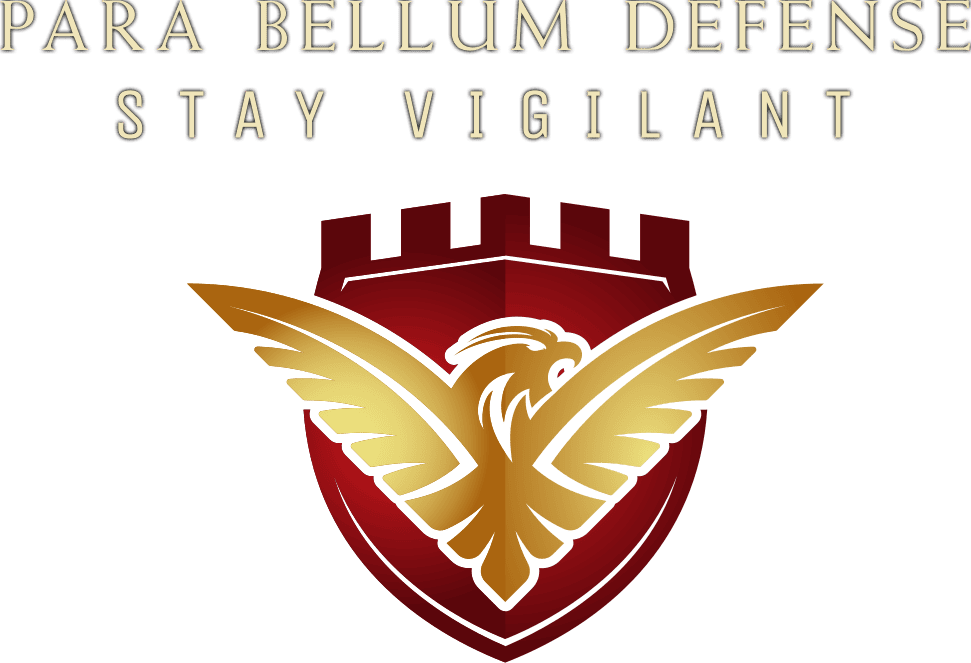
free shipping on orders over $25
We’re having a sale on all our products. Enter your email below to be notified about future sales.


We’re having a sale on all our products. Enter your email below to be notified about future sales.


In a world where danger and safety dance a delicate balance, you’ve got the power to tip the scales in your favor. By embracing non-lethal self-defense strategies, you’re not just preparing for the worst; you’re reclaiming your peace of mind.
So, you’ve got a warrior spirit inside of you just waiting to break free, huh? Ready to take on the world and turn ordinary objects into shields of power? But where do you begin, and what do you need to equip yourself for this adventure?
Alright, let’s kick things off by tapping into that assertive side of yours and unleashing the warrior within. It’s all about taking action and being in control. No more waiting around for things to happen – it’s time to make them happen!
So, are you ready to step into your warrior shoes and face the world head-on? Let’s do this!
Situational awareness is a skill that many people overlook, but it’s actually super important for staying safe in your daily life. When you work on this skill, you’re basically figuring out how to pay attention to what’s going on around you and how people are acting. This can really help you steer clear of any potential dangers.
So, you might be thinking about how to improve this skill. Well, the first step is to stay in the moment. Instead of staring at your phone while you walk, lift your head up and take in your surroundings. Look out for the exits whenever you walk into a room and observe how people around you are behaving. If someone’s actions seem strange, listen to your instincts.
It’s also vital you don’t let routine dull your senses. Familiar paths can breed complacency, making you an easier target. Change your routes regularly, and always be aware of who’s behind or ahead of you.
While situational awareness plays a key role in self-defense, developing your verbal assertiveness is equally important in deterring potential threats.
Being verbally assertive is like putting on armor for your voice. It means being firm, clear, and direct. You’re not seeking out a fight, but you’re also not making yourself an easy target. To start, practice speaking with a strong, confident tone. How you say something can often matter more than what you say. Your voice should convey confidence, not fear.
Maintain eye contact. It communicates that you’re aware and in control, not an easy prey. But remember, there’s a fine line between assertive and aggressive. You’re standing your ground, not provoking a fight.
Learn to say “no” without explanation. In situations where you feel uncomfortable or threatened, you don’t owe anyone a detailed reason. A firm “No” or “I’m not interested” should be your go-to.
Finally, practice different scenarios. Practicing is key. Whether you’re in front of a mirror or with a friend, rehearsing what you’ll say out loud in various situations can really help. You’ll be surprised at how much more confidently you can speak when you’ve prepared in advance.
You might not realize it, but every day you’re surrounded by potential self-defense tools. Your keys, for example, can be a powerful weapon when held between your fingers, ready to strike an attacker’s sensitive areas. Even a pen, with its pointed end, can be used as a makeshift weapon in dangerous situations. It’s all about knowing how to utilize what’s available to you.
When you think about your handbag or backpack, remember they’re not just for carrying your stuff. In a tough situation, you can use them as shields or swing them to keep some distance between you and someone threatening. Also, don’t forget the power of a hot cup of coffee or water. If you throw it at an attacker’s face, it can buy you some time to get away.
.
Shifting focus to personal safety devices, let’s explore the basics of using pepper spray effectively. It’s an accessible tool that can provide a crucial advantage in dangerous situations. Understanding how to use it properly can be a game-changer for your personal safety.
Here are three essential tips to keep in mind:
When it comes to personal safety, a tactical flashlight is a versatile and powerful tool for self-defense. It may seem simple, but it can actually help you gain an advantage over potential attackers. You’re not just holding a light; you’re using a device that can disorient attackers, help you move safely in the dark, spot dangers from far away, and even temporarily blind assailants to give you a chance to escape.
| Feature | Benefit |
|---|---|
| High Lumens | Disorients potential attackers |
| Strobe Setting | Increases confusion in threats |
| Durable Design | Can be used as a striking tool |
When you pick a tactical flashlight, go for one that’s easy to carry and quick to use. Make sure it has a high lumen output and a strobe setting to disorient others. It should be tough too, in case you need to use it as a striking tool in a pinch.
When it comes to staying safe, knowing basic self-defense moves is essential. It’s all about boosting your confidence and having the skills to keep yourself safe in unexpected moments. You don’t have to be a martial arts pro to defend yourself well.
Here are three simple, yet powerful moves you can start practicing today:
After exploring basic self-defense moves, let’s consider the role of technology in enhancing your safety with personal safety apps. These apps are a digital extension of your self-defense toolkit, designed to offer you peace of mind and an extra layer of protection. You’ve got a powerful ally in your smartphone.
One key feature to look for is real-time location tracking, which allows selected contacts to monitor your journey until you’ve safely reached your destination. It’s like having a guardian angel watching over you, ensuring you’re never truly alone, especially during those late-night walks or unfamiliar routes.
Another invaluable tool is the SOS signal. With a simple tap or voice command, you can alert your emergency contacts or local authorities, sending them your exact location. This quick response feature can be a lifesaver in critical situations.
You’ll also find apps with built-in alarm systems that emit a loud sound to deter attackers and attract attention. While we won’t delve into physical alarms here, the concept remains the same: making noise can make a difference.
Navigating personal safety apps isn’t just about downloading them; it’s about making them a part of your daily routine. Customize their settings to suit your lifestyle, ensuring they’re always ready when you need them most. Stay safe, stay smart, and let technology empower you.
Don’t forget about the effectiveness of a whistle or personal alarm when it comes to staying safe. These small gadgets can be strong tools in stopping an attacker and getting attention. They’re easy to use, easy to get to, and can be a key part of your non-lethal self-defense plan.
Here’s why you should consider adding a whistle or alarm to your safety toolkit:
Incorporating whistles and alarms into your safety plan offers a straightforward yet effective way to protect yourself.
Imagine your mind as a fortress; it’s not just the walls but the strategy behind them that matters. You’ve got to build mental resilience, visualize confrontations, and strengthen your willpower to effectively defend yourself.
Yes, practicing deep breathing exercises and mindfulness can help you stay calm in stressful situations. Focusing on your breath helps ground you, making it easier to think clearly and respond effectively if needed.
You can safely practice self-defense techniques at home by following online tutorials from reputable sources. Use a mirror to correct your form, and consider using a punching bag to simulate real-life scenarios without a partner.
Navigating the legal waters of self-defense in public spaces is like walking a tightrope. You must understand local laws to ensure you’re not crossing lines while protecting yourself with non-lethal tools and techniques.
To build a supportive community focused on women’s safety and self-defense, start by organizing local meetups, creating online forums, and partnering with self-defense instructors. It’s all about connecting, sharing experiences, and learning together.
Para Bellum Defense
190 Chambers Street
Spencerport, NY 14559
Telephone: 585-284-6669

I’ve been browsing online more than 3 hours today,
yet I never found any interesting article like yours.
It’s pretty worth enough for me. Personally, if all website owners
and bloggers made good content as you did, the net
will be a lot more useful than ever before.
Thank you for your kind words. We strive to provide the best possible experience for our customers. Check out our website.